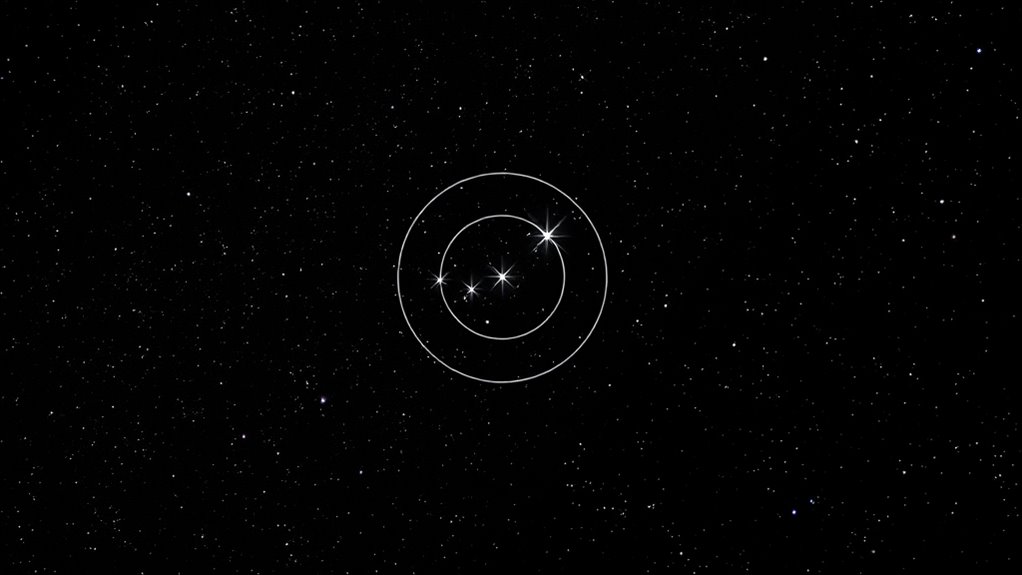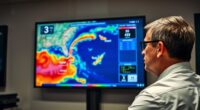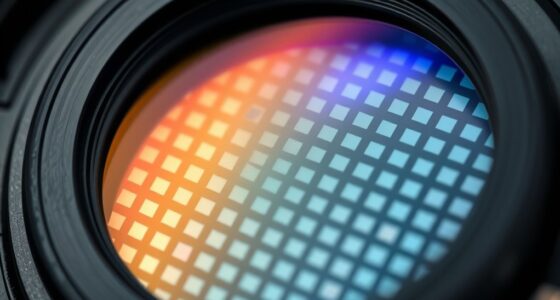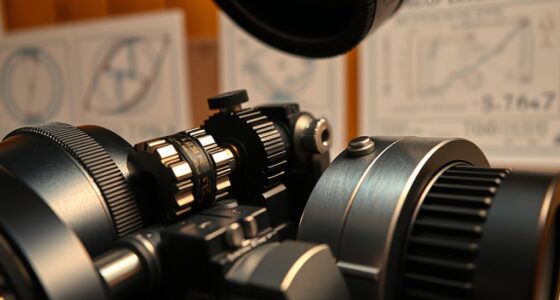To maximize tracking accuracy with multi-star guiding, select bright, stable stars that are well-distributed across your field of view, avoiding stars near the horizon or edges to prevent atmospheric distortion and optical aberrations. Adjust your guide camera settings, like gain and exposure, to capture reliable signals without saturation. Using multiple well-chosen guide stars helps average out atmospheric effects, improving precision. Continue exploring strategies to refine your guide star choices for even better results.
Key Takeaways
- Select multiple bright, stable guide stars well within the field to improve tracking accuracy and reduce atmospheric effects.
- Avoid stars near the horizon or frame edges to minimize atmospheric distortion and optical aberrations.
- Balance guide star brightness to prevent sensor saturation while ensuring reliable signal detection.
- Use algorithms that prioritize stars with consistent brightness and minimal variability for stable guiding.
- Incorporate multi-star guiding to average signals, mitigating the impact of atmospheric turbulence and local distortions.

Selecting the right guide star is a critical step in ensuring accurate telescope tracking and imaging. When you’re capturing detailed astrophotography, even the slightest misalignment can cause streaks or blurry images. That’s where effective guide star selection, especially through auto guiding techniques, makes all the difference. Auto guiding systems use software and hardware to continuously monitor a guide star’s position and correct tracking errors in real-time. The key to successful auto guiding lies in choosing a star that provides consistent, reliable signals. You want a star that is bright enough to be detected easily by your guiding camera but not so bright that it saturates the sensor. This balance helps your auto guiding system perform at its best, minimizing the risk of false corrections or signal loss.
Star brightness enhancement plays a pivotal role here. If your guide star is too dim, the guiding software might struggle to track it accurately, especially under light pollution or moonlit conditions. Conversely, overly bright stars can lead to blooming or saturation, which can distort the guiding data. To optimize star brightness, you may need to adjust your camera’s gain, exposure time, or even the filters you’re using. Many auto guiding techniques incorporate algorithms that select the best possible guide star based on brightness, position, and stability. These systems often scan the field of view and prioritize stars that meet specific brightness criteria, ensuring your guiding remains steady and precise. Additionally, understanding the field of view and how guide star placement affects guiding accuracy can further improve your results.
When choosing a guide star, avoid those near the horizon or close to the edge of the frame, as atmospheric distortion and optical aberrations are more common there. Instead, focus on stars that are well-centered in your field of view and have a stable brightness profile. Multi-star guiding techniques take this approach further by using multiple guide stars simultaneously. This method helps average out atmospheric turbulence and local distortions, leading to improved tracking accuracy. With multi-star guiding, your system can adapt to changing conditions, reducing the impact of any single star’s variability or brightness fluctuations.
Frequently Asked Questions
How Does Atmospheric Turbulence Affect Guide Star Selection?
Atmospheric turbulence impacts guide star selection by causing atmospheric distortion, which makes stars appear to twinkle and shift unpredictably. You need to account for turbulence variability, as it changes rapidly and affects star stability. Choosing guide stars in areas with less atmospheric distortion helps improve tracking accuracy. By selecting stars less affected by turbulence, you can maintain better guiding precision and minimize errors caused by atmospheric fluctuations.
What Are the Best Practices for Selecting Guide Stars in Crowded Fields?
In crowded fields, over 60% of potential guide stars have low contrast, making selection tricky. You should prioritize stars with high contrast and a well-distributed pattern across your field, avoiding clusters that can bias tracking. Use real-time imaging to identify stars with stable brightness, and select multiple guide stars for redundancy. This approach boosts tracking precision and minimizes the impact of local turbulence or star variability.
How Does Guide Star Brightness Influence Tracking Accuracy?
Guide star brightness directly impacts your tracking precision; brighter stars provide stronger signals, making it easier for your guiding system to detect and correct minor deviations. If the guide star is too dim, your system struggles to maintain accurate tracking, leading to blurred images. Thus, choose a sufficiently bright guide star to guarantee maximum tracking accuracy, especially in multi-star guiding, where precision is vital for high-quality astrophotography or observations.
Can Guide Star Selection Be Automated Effectively?
Your guide star selection can be automated effectively with advanced algorithms that analyze selection criteria quickly and accurately. These automated algorithms sift through star catalogs to identify ideal guide stars, saving you hours of manual effort. By prioritizing criteria like brightness, position, and stability, automation guarantees you get the best stars for precise tracking. This approach considerably enhances tracking accuracy, making star guiding nearly foolproof and dramatically improving your astrophotography results.
What Are the Limitations of Multi-Star Guiding Systems?
You might face limitations with multi-star guiding systems due to sensor calibration issues and star catalog accuracy. If your sensors aren’t properly calibrated, guiding errors can occur, reducing tracking precision. Additionally, inaccuracies in star catalogs can lead to selecting suboptimal guide stars, impacting overall performance. Weather conditions and light pollution also limit guide star visibility, making it harder to maintain consistent, precise tracking during observations.
Conclusion
By carefully selecting guide stars, you reveal the secret to pinpoint accuracy in your tracking. Think of it as choosing the perfect compass for a voyage—your guiding stars steer you through the night’s darkness with unwavering precision. Remember, the right stars aren’t just points of light; they’re your allies in capturing crystal-clear images. So, trust your instincts, optimize your choices, and let your guiding stars illuminate your path to impeccable astronomical observations.







